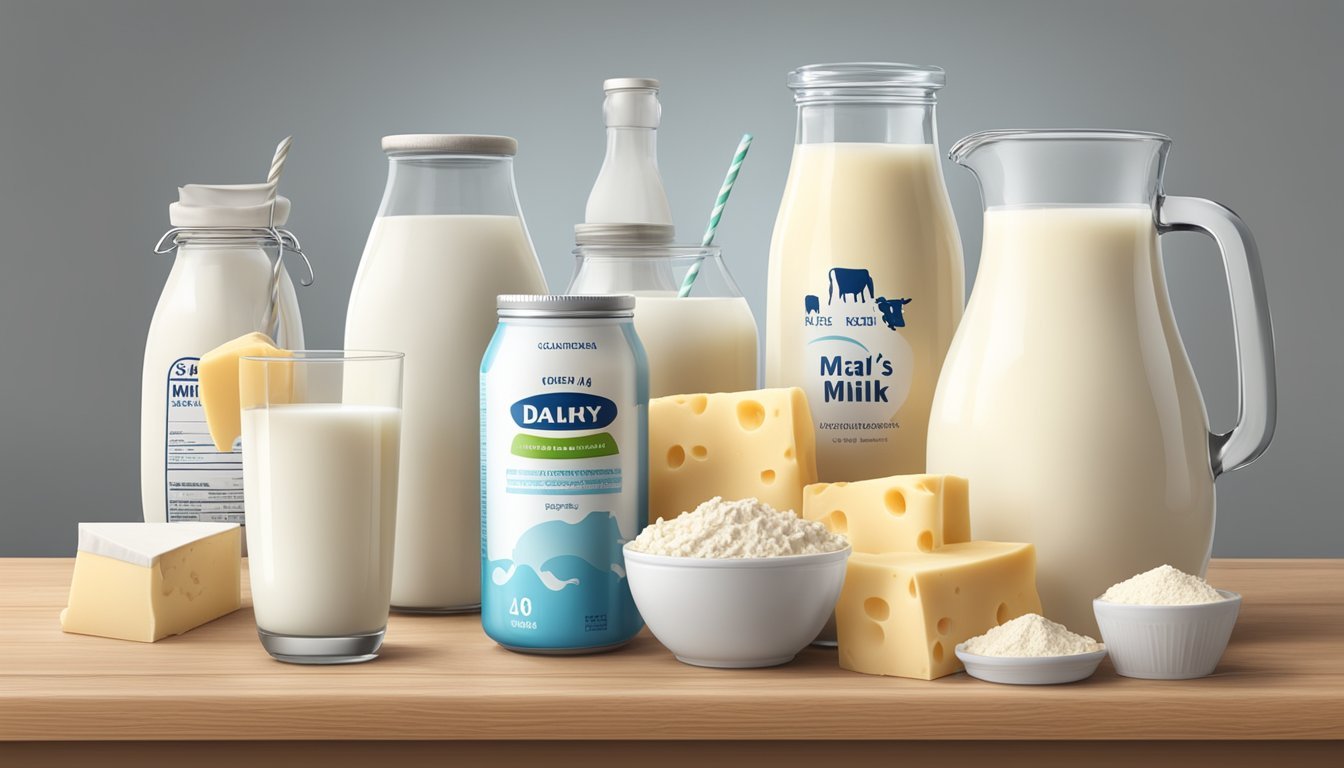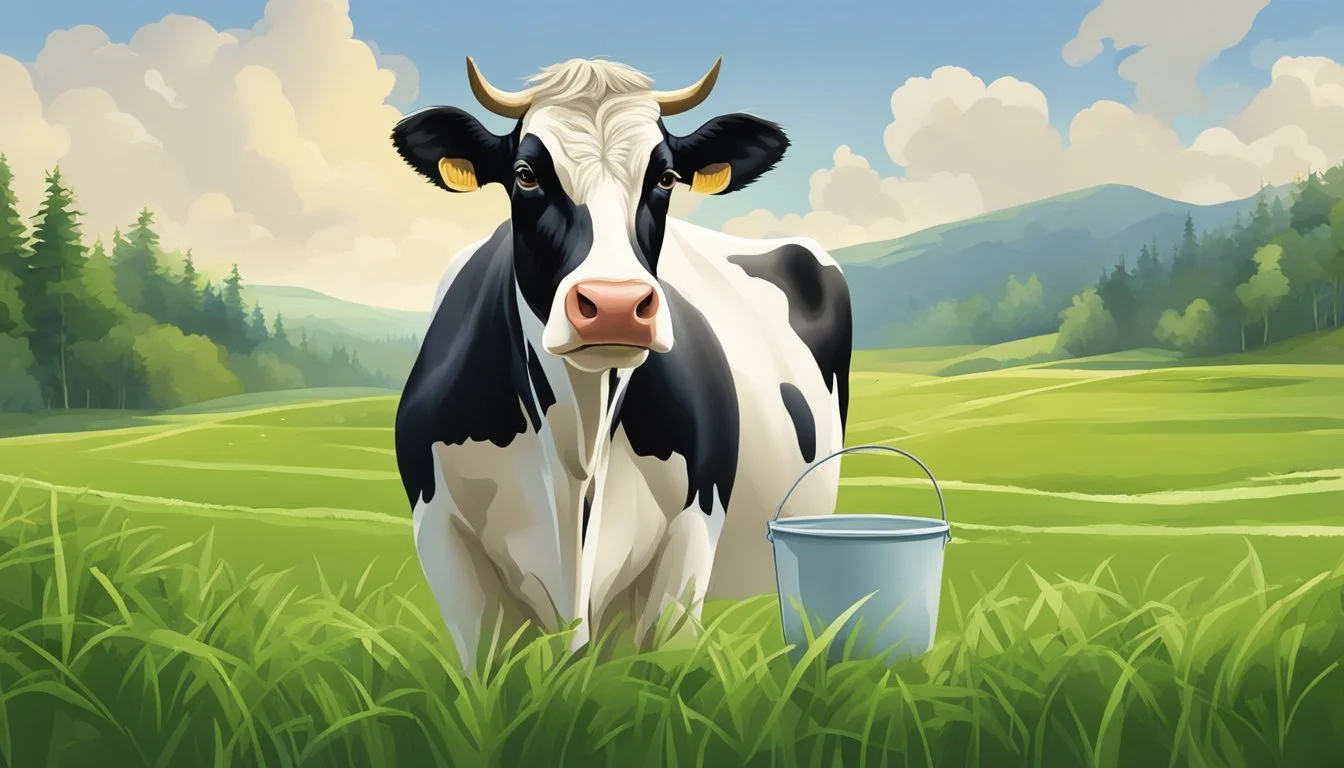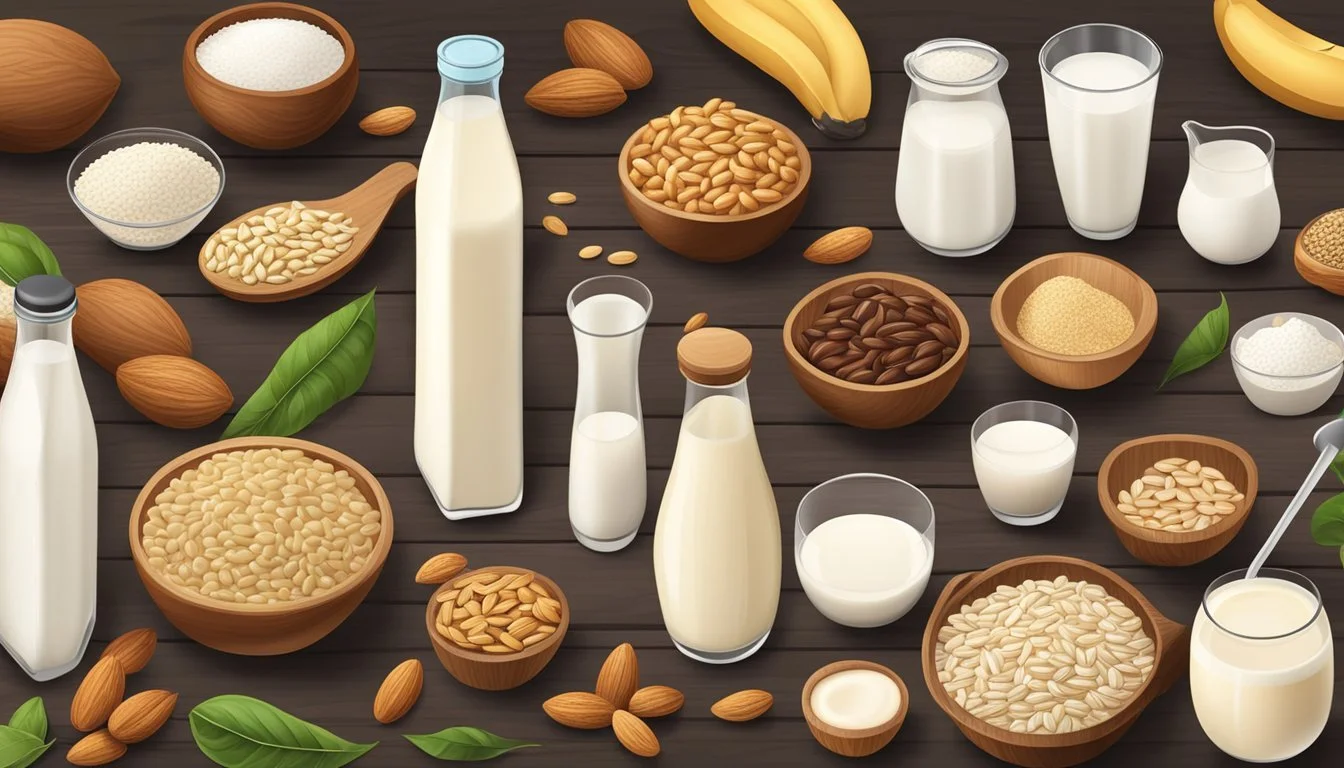Should You Give Your Child Cow's Milk?
Examining Nutritional Benefits and Concerns
Discover > Healthy Living Through Food > Should You Give Your Child Cow's Milk?
Deciding whether to give a child cow's milk is an important nutritional choice that parents face. Cow's milk has long been a staple in many diets, traditionally recommended for its rich content of calcium, vitamin D, and other essential nutrients thought to be vital for childhood development. Its consumption during childhood is often advocated to support the growth of strong bones and teeth, and it serves as a primary source of dietary fat necessary for brain development in toddlers.
However, in recent years, concerns over potential health risks associated with cow's milk have emerged. These include the risk of developing lactose intolerance, allergies, and the debated association with certain chronic diseases. Moreover, with the rise of plant-based diets, many parents consider alternative milk options claiming to offer similar, if not better, nutritional profiles without the potential drawbacks of cow's milk. The nutritional suitability of these plant-based alternatives for children is a topic of ongoing research and debate within pediatric nutrition circles.
Navigating the myriad of information surrounding children's dietary choices can be a daunting task for parents. The inclusion of cow's milk in a child's diet is a decision that requires careful consideration, taking into account individual health considerations, dietary requirements, and scientific evidence. For those exploring alternative options, non-dairy milk presents a viable choice, especially for children with specific health concerns such as amounts of iron intake, a history of obesity, or susceptibility to heart disease.
Understanding that breast milk is often considered the gold standard for infant nutrition, parents may seek alternatives to breast milk when necessary. Human breast milk, recognized for its unique composition tailored to a baby's needs, is not always a feasible option. In such cases, non-dairy milks can provide a suitable alternative, ensuring that the child receives the essential nutrients crucial for their growth and well-being. This becomes particularly relevant for parents of breastfed babies who are exploring options that align with their child's specific health needs and dietary considerations, ultimately offering a valuable alternative to breast milk.
Nutritional Profile of Cow's Milk
Cow's milk stands as a significant cornerstone in providing essential nutrients crucial for the growth and development of children. As a staple in many diets, it contributes to a balanced diet, offering a diverse range of nutrients. Dairy products, including various dairy foods, serve as valuable sources of calcium, a mineral vital for bone health. Parents contemplating the introduction of cow's milk to children should consider consulting their healthcare provider to ensure it aligns with the child's dietary needs and potential food allergies.
For infants, cow's milk is not recommended as a primary source of nutrition, and human milk or infant formula is generally preferred during the early months. This is due to the differences in the composition of milk protein and other nutrients between human milk and cow's milk. Additionally, for those exploring alternative food options, it's essential to be mindful of potential food allergies, particularly with dairy products.
Essential Fatty Acids and Proteins
Cow's milk contains essential fatty acids and high-quality proteins that are vital for a child's development. Proteins are fundamental for building and repairing body tissues, including muscle and bone, and they also serve as a source of energy. The essential fatty acids found in milk, such as omega-3s, are critical for brain development, particularly in infants and babies.
Protein Content: Approximately 3.4% of whole cow's milk
Fatty Acids: Includes omega-3s and omega-6s
Vitamins and Minerals
Milk is enriched with a range of vitamins and minerals essential for children's health. Calcium and Vitamin D support bone health and development, while iron is important for blood production and cognitive growth.
Nutrient Benefits:
Calcium:
Benefit: Crucial for bone health and dental strength.
Vitamin D:
Benefit: Aids calcium absorption and bone growth.
Iron:
Benefit: Supports blood health and cognitive function.
Comparing Fats: Whole Milk Versus Low-Fat
When choosing between whole milk and low-fat milk, it's important to consider the fat content and its impact on nutritional needs.
Whole Milk: Contains approximately 3.5% fat, providing energy and helping in the absorption of fat-soluble vitamins.
Low-Fat Milk: Has a reduced fat content, about 1% to 2% fat, which can be beneficial for older children and adults with different nutritional requirements.
Risks and Considerations for Infants
Introducing cow's milk to infants carries certain risks that parents need to consider, such as potential allergies, iron absorption issues, and impacts on the kidneys and digestive system.
Potential for Allergies
Cow's milk can be a common allergen for infants. A milk allergy occurs when the immune system incorrectly identifies proteins in cow's milk as harmful, triggering an allergic response. Symptoms can range from mild, such as hives or a rash, to severe, like anaphylaxis. Parents should monitor their infant for signs of an allergic reaction if cow's milk is introduced.
Iron Absorption and Anemia
Cow's milk is low in iron and may lead to iron absorption problems. Excessive cow's milk consumption can also cause minor intestinal bleeding in some infants, which, over time, can contribute to iron-deficiency anemia. This condition is characterized by inadequate red blood cells due to insufficient iron levels, leading to symptoms such as fatigue and developmental delays.
Effects on Kidneys and Digestive System
An infant's kidneys and digestive system are still developing. High levels of proteins and minerals in cow's milk can be hard for infants to process, potentially leading to renal stress. Moreover, cow's milk lacks the optimal nutrients that an infant's digestive system requires, which can lead to digestive discomfort and issues such as constipation or diarrhea.
The Role of Milk After 12 Months
After a child's first year, cow's milk can serve as a significant dietary source of several key nutrients. Parents and caregivers look to milk to complement the solid foods in a growing toddler's diet, providing a balance of fats, proteins, and calcium.
Transitioning from Formula to Milk
When a child reaches 12 months, the American Academy of Pediatrics often suggests that parents can start introducing whole cow's milk. Transitioning from formula to milk should be gradual. A common strategy is to mix formula and whole milk, gradually increasing the proportion of milk over several days. This slow shift can help toddlers adapt to the taste difference and regulate their digestive system's response.
Day 1-3: 75% formula, 25% whole milk.
Day 4-6: 50% formula, 50% whole milk.
Day 7-9: 25% formula, 75% whole milk.
Day 10: 100% whole milk.
Failure to transition gradually can lead to refusal or digestive issues. During this time, introducing milk in a sippy cup can also start weaning the child off bottles, reducing the risk of dental problems associated with prolonged bottle use.
Serving Sizes and Frequency
Once the transition is complete, toddlers should consume about 16-24 ounces (2-3 cups) of whole milk per day, according to pediatric recommendations. Too much milk can decrease the appetite for other nutritious foods or lead to nutrient imbalances.
Daily Serving:
Minimum: 16 ounces
Maximum: 24 ounces
Families should serve milk in sippy cups rather than bottles to support development and dental health. Limiting milk intake ensures children have room for a variety of foods in their diet and encourages healthy eating patterns as they continue to grow.
Milk Alternatives and Non-Dairy Options
In today's market, consumers have a plethora of milk alternatives to choose from, ranging from organic milk to plant-based options. This diverse array accommodates individuals with various dietary considerations, including those with intolerance to milk or milk protein allergy. For those seeking lower-fat options, there is also lower-fat milk available that offers a lighter alternative without compromising on essential nutrients.
Understanding that some individuals may face challenges with traditional dairy products due to lactose intolerance or specific allergies, suitable milk alternatives have become increasingly essential. Plant-based alternatives not only cater to those with intolerance to milk but also offer unique flavors and textures. Moreover, these alternatives strive to replicate the nutrients in breast milk, making them a viable option for those seeking a wholesome and nourishing substitute.
Whether it's the desire for organic milk or the need to navigate dietary restrictions, the availability of diverse milk alternatives ensures that consumers can find a suitable option that aligns with their health goals and preferences.
Plant-Based Milks
Soy Milk: (how long does soy milk last?) Rich in protein and fortified with vitamins, soy milk is a popular dairy-free option. It closely mimics the protein content of cow's milk.
Almond Milk: A low-calorie alternative that's rich in vitamin E. However, almond milk (how long does almond milk last?) is much lower in protein compared to dairy milk.
Oat Milk (how long does oat milk last?): Known for its creamy texture and naturally sweet taste. It often contains added vitamins and minerals and is higher in carbohydrates.
Rice Milk: (how long does rice milk last?) The least allergenic of milk alternatives, suitable for those with nuts (how long do nuts last?) or soy allergies. It is comparatively low in protein.
Coconut Milk: Contains medium-chain triglycerides (MCTs), but it's lower in protein and can be high in saturated fats.
Cashew Milk: Offers a creamy texture with healthy fats, and like other nut milks, usually has added vitamins and minerals.
Lactose Intolerance and Adaptations
Lactose-Free Dairy Milk: Dairy without lactose, retaining the protein and calcium content of regular milk, suitable for those with lactose intolerance.
Low-Fat and Nonfat Milk: Options for those who seek dairy but with reduced fat content. They maintain high levels of protein and calcium.
All mentioned milk alternatives typically lack naturally occurring calcium and vitamin D but are often fortified. They can be suitable for children with lactose intolerance or dairy allergies, aligning with dietary preferences such as veganism. It is essential to check nutritional labels to ensure these alternatives meet an individual’s nutritional requirements.
Guidance for Parents and Consultation with Healthcare Providers
Parents deciding whether to give their child cow's milk should first consult with a healthcare provider, such as a pediatrician or family doctor. They are best placed to provide personalized advice, taking into account the child's individual health needs and family history.
Initial Considerations:
Breastfeeding is recommended by the American Academy of Pediatrics (AAP) for the first six months exclusively, and then alongside other foods for at least one year.
If breastfeeding is not possible, baby formulas are a safe alternative.
During baby formula shortages, consult a healthcare provider before making any changes to a child's diet.
Homemade formulas are not recommended, due to potential health risks.
Important Guidelines:
Introduce cow's milk after the first year to ensure proper nutrition and development.
Choose full-fat or reduced-fat milk based on the healthcare provider's recommendations.
Formatted Recommendations:
Under 12 months:
Recommendation: Avoid cow's milk; rely on breastmilk or formula.
12-24 months:
Recommendation: Introduce whole cow's milk.
2 years and up:
Recommendation: Transition to reduced-fat milk if advised.
Remember, ongoing pediatric care is crucial for monitoring a child’s development and nutritional needs. By maintaining regular check-ups, parents can ensure their child receives the appropriate dietary advice as they grow.






